Isobel Blackthorn's Blog, page 6
May 20, 2021
From Australia to the Canary Islands – I’m Halfway Around the World from Where I Want To Be.
I’m sitting at my desk all rugged up on a cold and sunny day. I’m a British-Australian living down under, and if you drove a spike through the centre of the earth from my place you would just about end up in the Canary Islands. Which is where I want to be. And can’t be.
It’s a pretty weird feeling looking back a year or so to when I was last in Fuerteventura. That was when I looked around and decided that the Canary Islands were definitely where I wanted to live again, having lived in Lanzarote in the 1980s.
My last visit to Fuerteventura was February 2020. Brexit loomed large. Coronavirus was not yet a thing. With joy in my heart and a lot of fear, I hopped on the plane back to Oz in early March thinking I was about to sell my house, pack up my things and relocate in time to beat the Brexit deadline. I even gave a lawyer power of attorney so she could act on my behalf to buy a house.
Then, everything changed. Two weeks later, Australia became a fortress. Covid went viral. Even if I managed to beg my way out of the country, I couldn’t take the risk.
Which means I am now in the same position as tons of others who yearn to be where they cannot be, except that I am so so far away.
To bring myself closer, I am blogging. It’s a way of staying connected. Until, well, maybe one day…
I took this photo in that February of 2020. Just look at that incline! I was renting an apartment up that hill. I’d gone down to the port as I was looking at buying a flat nearby.
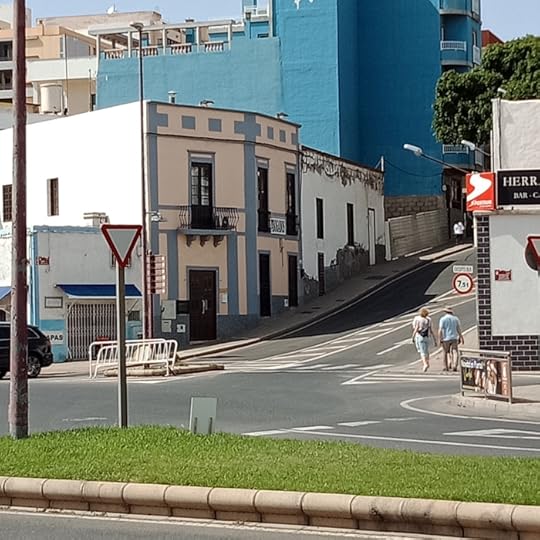 Puerto del Rosario
Puerto del RosarioI was drawn to the area because one of the few locations that 19th century travel writer Olivia Stone stayed in is nearby. Back then, the building was a hotel. Now it’s a ruin.
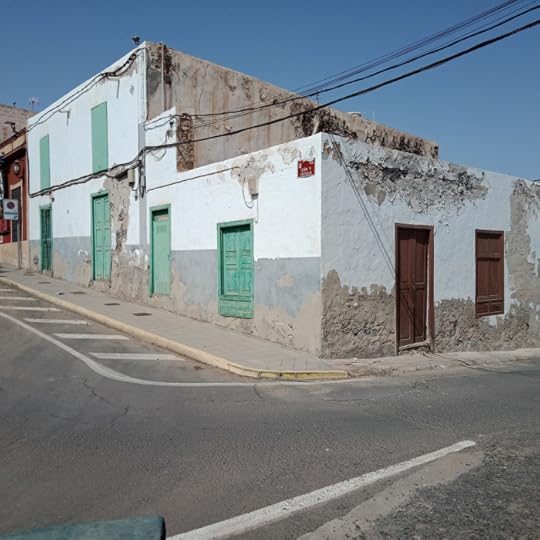
Olivia Stone came on a tour of the Canary Islands with her husband in the 1880s. Her travel diary Tenerife and Its Six Satellites is well worth a read. I dip into it from time to time. It’s like entering an alternate universe. You know the places mentioned, you can feel the same heat, the wind, the sun on your face, but back then Fuerteventura was nothing at all like it is now.
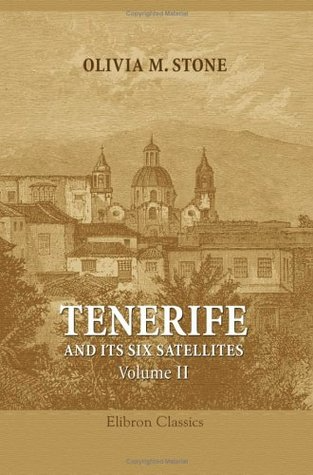
These two volumes are a vital historical document. Olivia Stone documented the traditional ways of the islands. The section on Fuerteventura opens with a description of Corralejo as a collection of small fishermen’s huts. Here’s what she says about Puerto del Rosario, then Puerto Cabras:
Puerto Cabras is officially, but not really, the principal town of Fuerteventura. Several towns in the interior are larger and more important. It is, however, the only port, and hence its priority. The anchorage is not good, and the roadstead wide and open. The little village is built on the most hilly part of the shore, and so steep are its streets, that there is scarcely a house that not a view of the sea. The streets are very broad, grass-grown, and deserted; the houses are low, a few being two-storied, but are mostly in cottage style. They are neatly built. What vegetation there is being confined to the patios is consequently invisible, still further helping to give the dead appearance. A cannon-ball fired up a street would hurt no one.
Tenerife and its Six Satellites Vol II, p 354.
What a vivid image! It really makes you realise the changes that have taken place on the islands in the last 130 years or so. Olivia Stone’s Puerto Cabras is a far cry from the Puerto del Rosario I encountered last year.
I think the modern version is charming. Maybe I look through rose-coloured glasses but as I sit here trying to stay warm at my desk, another memory floats in. It’s of the woman standing behind me in the checkout queue in the Hiperdino supermarket on Calle Isla Graciosa in the last week of my stay. The way she broke out in conversation in Spanish assuming I could understand her, with my mind racing to assimilate her words and form replies. There we stood with her chatting and laughing and me floundering for the gist. I did well enough because she kept nudging my arm and chatting some more.
And I beamed inwardly all the way back to my flat.
How long it will be before Fortress Australia opens its borders and I can at least visit my favourite little islands is anyone’s guess. I can guarantee that all of you Brits will get there before me.
Keep safe. Go well!
follow this site to follow my blog
May 18, 2021
Praise for The Legacy of Old Gran Parks
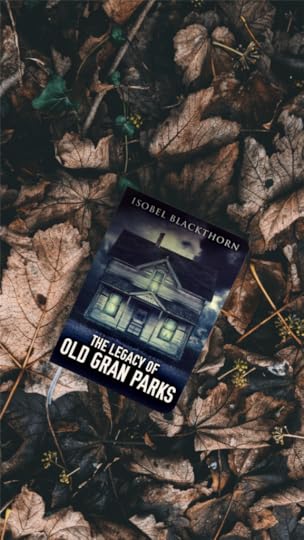
The Legacy of Old Gran Parks book tour hosted by Blackthorn Book Tours has yielded a raft of praise from book critics. Here are the highlights. A warm thank you to all the reviewers who took part and to BBT for their amazing service.
 Lead Review from Rainnbooks
Lead Review from RainnbooksThe opening chapter left me with goosebumps and from then on, the Legacy Of Old Gran Parks made me stand at the edge of a precipice. Described as darkly humorous, this story is set in Southern Australia in the 1980s. Cann River comes alive with the description by the author. There’s a palpable sense of the wilderness and the desolate bushes and the never-changing landscape of the place as Miriam rolls into the town with a broken car.
Events that begin to unfold in this bleak town then take on a surreal quality as the readers are treated to some subtle humor and gory deaths and heaven help me, I wasn’t sure whether to feel revolted or laugh at the turn of the incidents that were happening around the women. The story does have some graphic dismembering being described but there’s a rich sense of underlying humor that for a time it is easy to forget that that was what was being described. It was exactly what one would expect from such hardened women whose presumptions and further decisions are fuelled by the past that has been their life. As Miriam becomes embroiled in the perceived injustices and the revengeful attitude of Frankie and Pearl, it is a week of a hellish nightmare for her that unfolds with a horror of its own.
Several books that describe Australia have been mentioned by the author and clearly, the reader gets a tantalizing glimpse into the psyche of a backpacker like Emily whose wish is to explore rural Australia. Pearl, Frankie, Emily, and Miriam are not too likable characters but Pat and Con walk away with the cake, their antics with the meat and burgers giving me shudder every time I think it thru.
At the end of it all, the Legacy of Old Gran Parks does extract its pound of flesh from a reader with its layered and eerie storytelling.
Highly recommended for fans who can stomach some gruesome horror laced with rich and dark humor.
[image error]“The Legacy of Old Gran Parks is an exquisite composition of finest horror scenarios, thoughtfully arranged to a performance that works like a kaleidoscope” – Anni, Goodreads
“Definitely check this one out and add to those lists.” Angel White, Goodreads.
“bizarre yet fascinating…I really liked the Australian and small town setting which were beautifully described by the author.” Thereadingowlvina, Instagram
“Blackthorn has the capacity to truly immerse the reader in the setting. The isolation and sense of creepiness created a foreboding atmosphere. The twists and turns were never predictable and the multiple crescendos in the book had me on the edge of my seat! “- mycovblog, Instagram
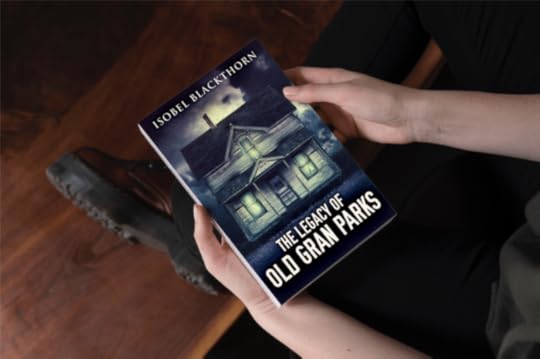
“The author’s writing was well done, kept me on edge, and successfully established an eerie setting that makes me wary of visiting small Australian towns now” – Fairest Fable, Instagram
“This book was fulfilling from the very first page. The opening scene, the brutal murder that weaves through the plot, sets the scene perfectly…This is an oddly feminist novel presenting four women united only in their isolation, which Blackthorn uses incredibly well as a tool to ramp up the tension. Another excellent aspect was the setting; it was rich and vividly described, down to the smells and the grit of the place. For an all-encompassing thriller experience, I would highly recommend this book.” – Writing Werewolf
“There are a few parts that had me laughing out loud, then embarrassed to be finding something so grotesque and unsettling funny.” – Power Librarian
“What a dark, twisted, funny thriller with four strong, independent, wicked women! I absolutely loved the setting of this book, it had an eerie, claustrophobic feel…extremely powerful and entertaining” – Goodreads
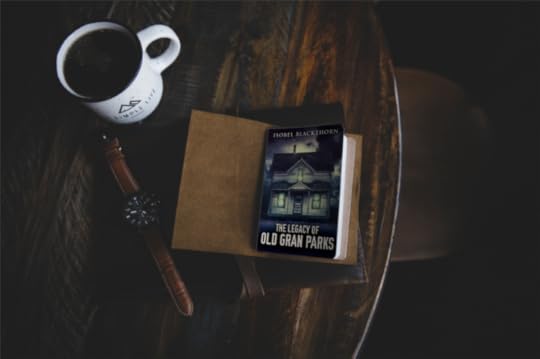
‘The Legacy of Old Gran Parks’ is an exquisite composition of finest horror scenarios, thoughtfully arranged to a performance that works like a kaleidoscope: The tale of Gran Parks functions as the background, the fates of the four female protagonists – Miriam, Frankie, Pearl and Emily – present the different colours that always form new patterns when you turn the kaleidoscope. This is not a typical haunted house/haunted village story… ‘ Ann-Kathrin Barfuß
‘… Set in a small town this has strong vibes of those B-Rated movies we love to hate. You know the ones…where people get stuck in a small podunk town and of course all sorts of horrific events happen. Some make it out alive…some not so lucky  … ‘ Alaska Angel
… ‘ Alaska Angel
‘… This tale lures you to the edge of your seat like you would around a campfire. You don’t know how, you don’t know where or what, but you do know something big is about the happen. Almost as though you are bracing yourself as go down the first fast decline on a rollercoaster…. ‘ Kiki Hempell
‘… I absolutely loved the setting of this book, it had an eerie, claustrophobic feel. Cann River is a small outback town…. Everything that’s there (which isn’t a lot), is run down, creepy and just so scarily quiet…. ‘ Amy Laidler
‘… Each woman has an encounter with a man who seems to be trouble: a drug addict staying in the hotel room next to Miriam, a man on the run convicted of rape and murder, a man with two daughters who is staying in a house next to Pearl seemingly without the owner knowing, and a man staying at the local lighthouse while the lighthouse keeper is out of town. There’s some mystery to each man. As the women unravel this mystery, the thrill of Gran Parks’s legacy takes hold…. ‘ Melissa Brickett
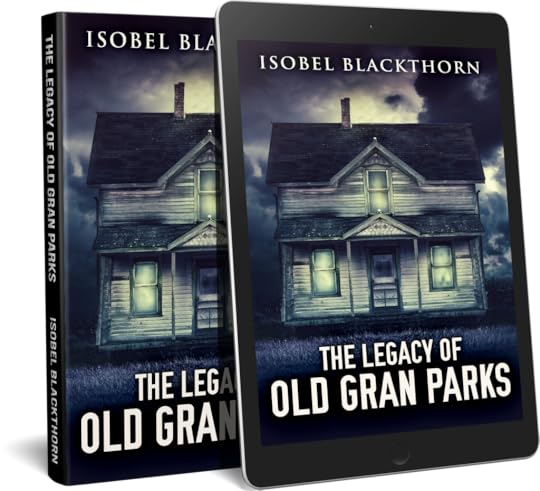
‘… Travelogue of the great Australian outback.
Coming of ‘old’ age story of four resilient women.
A macabre murder mystery.
A story of divine retribution.
Oh, and not to forget, just a dash of a ghost as well.
The Legacy of Old Gran Parks by Isobel Blackthorn has a story-line to whet anyone’s appetite (that’s a pun, read the book and you’ll get it).
Ooops, I forgot to mention comedy, dollops of black comedy…. ‘ Amisha Bahl Chawla
‘… I am glad that I’ve read this dark comedy thriller/horror. It was bizarre yet fascinating at the same time. It did take me some time to get into the story since these different POVs seem to be unrelated but it all worked out in the end…. ‘ Elvina Ulrich
“It’s a grandly dark story that is one of the most unique, thrilling scare-driven stories I’ve read in a while.” – Amy Shannon
Check out The Legacy of Old Gran Parks for yourself. http://mybook.to/granparks
May 14, 2021
Busting The Myths Of Mars And Venus (Down To Earth Book 1)by Veronica Schwarz
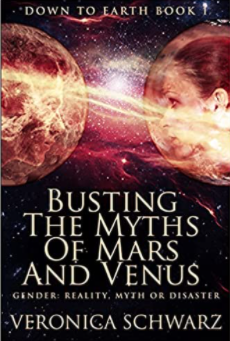 Why is gender equality so hard to achieve? because it’s rigged!
Why is gender equality so hard to achieve? because it’s rigged!Ten thousand years ago as agriculture replaced hunting- gathering, women’s status took a nose-dive around the world. Since then, no country on earth has yet achieved full equality of the sexes. Laws have changed in some coun- tries, but systems and many attitudes have not.
The system was rigged 10,000 years ago to ensure that men ruled the roost and women provided the backup ser- vices.
The system that perpetuates inequality still rolls on mostly unnoticed; in fact, it’s perceived as natural. Veronica Schwarz’s book, “Busting the Myths of Mars and Venus, Gender: Reality, Myth or Disaster, demonstrates how and why.
The key is gender stereotypes. Feminine and masculine. Female is a fact. Feminine is an act. Likewise, masculine is an act, a performance. The problem is not men, or women themselves, but a system that is rigged and reinforced. While laws have changed, the inbuilt biases and false be- liefs are still embedded in our brains, our myths, beliefs, languages and humour, as well as our processes, our enter- tainment and our institutions.
They continue to constrain both sexes from achieving their full potential, to the detriment of people, societies, econo- mies and the planet.
Veronica Schwarz’s research ranges across anthropology, history, sociology and psychology, myths and religions, phi- losophy and literature, but the book is written in an accessi- ble style with humour and anecdotes illuminating the re- search.
Veronica’s unique drawings add to the clarity of her story.
My ReviewWritten by an author with a lifetime of experience and wisdom, Busting the Myths of Mars and Venus is a highly readable and engaging read covering familiar ground for feminists and very much speaking to contemporary narratives of gender inequality and the need for change. The scope is wide, the brush broad, the chapters filled with insights and anecdotes. Written in an accessible, upbeat style and thoroughly researched, Busting the Myths of Mars and Venus achieves its aim in nineteen punchy chapters.
Veronica Schwarz has penned a book that can be dipped into a myth at a time, with lots of advice and tips and food for thought. This book would make a useful and insightful resource for educators and parents, and indeed it is for anyone wishing to help change the narrative, the attitudes and the behaviours that oppress women.
About Veronica SchwarzVeronica Schwarz was born in Darwin and spent her early childhood on a cattle station, Victoria River Downs. Since then, she has lived in many cities, towns and other countries. During her career as a teacher, she has taught people from prep to eighty years of age and loved it. She has also worked as a machinist in a trouser factory in Germany, an office clerk in London, a secretary in Canada, a taxi driver in Melbourne, and curriculum developer and policy analyst in the area of equal opportunity for women and girls in the Education Department of Victoria. She is an artist and a web designer as well as passionate traveler within Australia and around the world. determined to give Gulliver a run for his money.
Veronica has been writing for more than fifty years except for the many times that life got in the way. Her first short story was published in Woman’s Day in 1965. Since that time, she has published several books for teachers and school children, as well as non-fiction articles on travel, history, mythology, language, politics and philosophy, a children’s picture book and a self-help manual on learning.
She founded, edited and published for ten years an alternative magazine for women entitled The Dawn after Louisa Lawson’s original nineteenth century newspaper for women.
Her last book told the story of Joan of Arc through a serious of imaginary interviews with Joan. The book, entitled Ride the Wind. Choose the Fire, took some fifteen years of research and several trips to France. It is available online. She also continues to write and publish non-fiction articles and short stories.
Busting the Myths of Mars and Venus is available on amazon. Search for Veronica Schwarz or use the links below:
Busting The Myths Of Mars And Venus (Down To Earth Book 1)
 Why is gender equality so hard to achieve? because it’s rigged!
Why is gender equality so hard to achieve? because it’s rigged!Ten thousand years ago as agriculture replaced hunting- gathering, women’s status took a nose-dive around the world. Since then, no country on earth has yet achieved full equality of the sexes. Laws have changed in some coun- tries, but systems and many attitudes have not.
The system was rigged 10,000 years ago to ensure that men ruled the roost and women provided the backup ser- vices.
The system that perpetuates inequality still rolls on mostly unnoticed; in fact, it’s perceived as natural. Veronica Schwarz’s book, “Busting the Myths of Mars and Venus, Gender: Reality, Myth or Disaster, demonstrates how and why.
The key is gender stereotypes. Feminine and masculine. Female is a fact. Feminine is an act. Likewise, masculine is an act, a performance. The problem is not men, or women themselves, but a system that is rigged and reinforced. While laws have changed, the inbuilt biases and false be- liefs are still embedded in our brains, our myths, beliefs, languages and humour, as well as our processes, our enter- tainment and our institutions.
They continue to constrain both sexes from achieving their full potential, to the detriment of people, societies, econo- mies and the planet.
Veronica Schwarz’s research ranges across anthropology, history, sociology and psychology, myths and religions, phi- losophy and literature, but the book is written in an accessi- ble style with humour and anecdotes illuminating the re- search.
Veronica’s unique drawings add to the clarity of her story.
My ReviewWritten by an author with a lifetime of experience and wisdom, Busting the Myths of Mars and Venus is a highly readable and engaging read covering familiar ground for feminists and very much speaking to contemporary narratives of gender inequality and the need for change. The scope is wide, the brush broad, the chapters filled with insights and anecdotes. Written in an accessible, upbeat style and thoroughly researched, Busting the Myths of Mars and Venus achieves its aim in nineteen punchy chapters.
Veronica Schwarz has penned a book that can be dipped into a myth at a time, with lots of advice and tips and food for thought. This book would make a useful and insightful resource for educators and parents, and indeed it is for anyone wishing to help change the narrative, the attitudes and the behaviours that oppress women.
About Veronica SchwarzVeronica Schwarz was born in Darwin and spent her early childhood on a cattle station, Victoria River Downs. Since then, she has lived in many cities, towns and other countries. During her career as a teacher, she has taught people from prep to eighty years of age and loved it. She has also worked as a machinist in a trouser factory in Germany, an office clerk in London, a secretary in Canada, a taxi driver in Melbourne, and curriculum developer and policy analyst in the area of equal opportunity for women and girls in the Education Department of Victoria. She is an artist and a web designer as well as passionate traveler within Australia and around the world. determined to give Gulliver a run for his money.
Veronica has been writing for more than fifty years except for the many times that life got in the way. Her first short story was published in Woman’s Day in 1965. Since that time, she has published several books for teachers and school children, as well as non-fiction articles on travel, history, mythology, language, politics and philosophy, a children’s picture book and a self-help manual on learning.
She founded, edited and published for ten years an alternative magazine for women entitled The Dawn after Louisa Lawson’s original nineteenth century newspaper for women.
Her last book told the story of Joan of Arc through a serious of imaginary interviews with Joan. The book, entitled Ride the Wind. Choose the Fire, took some fifteen years of research and several trips to France. It is available online. She also continues to write and publish non-fiction articles and short stories.
Busting the Myths of Mars and Venus is available on amazon. Search for Veronica Schwarz or use the links below:
March 30, 2021
New release: Emma’s Tapestry
It’s always a thrill when a your latest release goes live. This one is especially special. The story is based on my own family history!
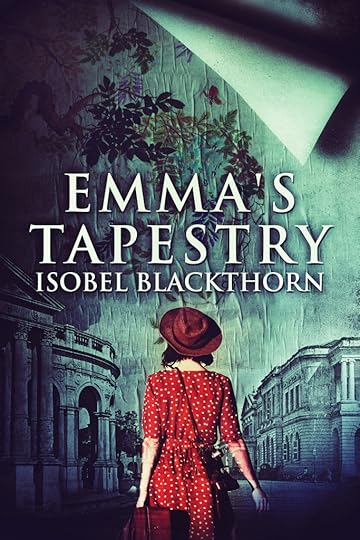 About Emma’s Tapestry
About Emma’s TapestryAt the dawn of World War Two, German-born nurse Emma Taylor sits by the bedside of a Jewish heiress in London as she reminisces over her dear friend, Oscar Wilde.
As the story of Wilde unravels, so does Emma’s past. What really happened to her husband?
She’s taken back to her days in Singapore on the eve of World War One. To her disappointing marriage to a British export agent, her struggle to fit into colonial life and the need to hide her true identity.
Emma is caught up in history, the highs, the lows, the adventures. A deadly mutiny, terrifying rice riots and a confrontation with the Ku Klux Klan bring home, for all migrants, the fragility of belonging.
Read more about the novel here – http://mybook.to/emmastapestry
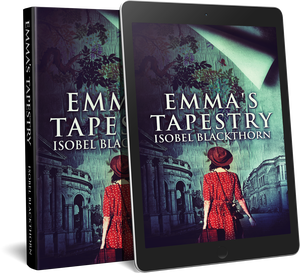
Emma’s Tapestry came about when my mother and I decided to investigate what happened to my great-grandfather who disappeared in 1928, leaving my grandmother fatherless and bereft. The result of his disappearance has reverberated down the generations and explains why my grandmother and mother both migrated to Australia in the 1960s. Once I found out what really happened, I also made some amazing discoveries about the astonishing life my great-grandmother led. It was such a compelling story, I had to turn it into a novel.
The first chapter of Emma’s Tapestry was shortlisted for the Ada Cambridge Prose Prize 2019 and can be found in my short story collection All Because Of You.
March 26, 2021
NO LAS DEJEN CAER
 Photo by JF Olivares
Photo by JF OlivaresAntiguas granjas salpican el paisaje de toda la isla, especialmente en los pueblos del interior y sus alrededores. Algunos han sido restaurados, y por supuesto a un gran costo, pero muchos han quedado en ruinas mientras se construyen nuevos edificios, a veces justo al lado. Lo que se está perdiendo no es solo roca y cemento, sino todo un legado, la historia de una forma de vida de un pueblo que vivió en uno de los climas más duros del planeta. Estos edificios son parte integral de la identidad cultural de Fuerteventura.
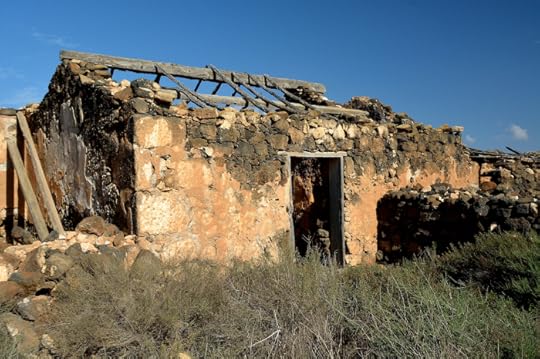 Photo by JF Olivares
Photo by JF OlivaresFueron imágenes como estas las que me impulsaron a repasar mi español e interactuar con las publicaciones de Jf Olivares. Lamenta lo que está sucediendo en Canarias como consecuencia del turismo no regulado. Pronto nos hicimos buenos amigos cuando le dije que compartía su pasión. Participé en la restauración de una antigua ruina en Lanzarote en 1988, que supuestamente tenía 300 años, una ruina que poseía en parte en ese momento. Era la casa de mis sueños en el pueblo de mis sueños en la isla de mis sueños y tuve que dejarla ir. ¡No es de extrañar que me atrajeran estas antiguas ruinas de Fuerteventura!
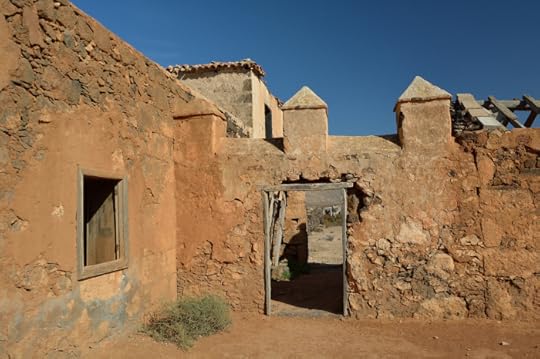 Photo by JF Olivares
Photo by JF OlivaresMi propia conexión con Fuerteventura se remonta a 1989, cuando visité, alojándome en Corralejo y Tetir. Me llevaron allí mis amigos locales de Lanzarote, donde vivía. La primera vez que fui, fue para un festival. Corralejo era tan vibrante y viva que conocí a un hombre, Pedro, un artista local. La atracción era fuerte, tan fuerte que quería que viviera con él en un pequeño pueblo llamado El Time.
Pero ya me estaba arrastrando otro hombre, el carismático Miguel Medina Rodríguez. En ese entonces yo era como una pluma en el viento. A menudo me pregunto cómo habría sido mi vida si me hubiera quedado, con Pedro, con Miguel, o solo en las islas que se habían incrustado en mi corazón. Eran días embriagadores, bohemios.
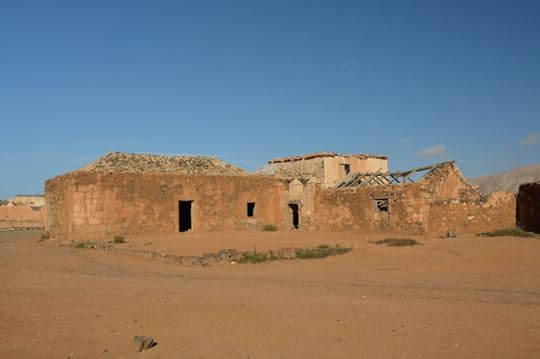 Photo by JF Olivares
Photo by JF OlivaresTenía muchas ganas de volver a las Islas Canarias. El año pasado estuve a punto de comprar una antigua granja en un pequeño pueblo, pero la venta fracasó. Entonces, hice lo mejor que podía hacer y escribí una novela ambientada allí, una novela sobre una mujer que gana un premio mayor de lotería y restaura una ruina en un pueblo llamado Tiscamanita. ¡Me encanta que mis personajes puedan vivir mis sueños!
Me quedé en Puerto del Rosario durante todo febrero de 2020 y no puedo esperar a volver de nuevo.
La Advertencia de Clarissa se escribió para ayudar a crear conciencia sobre estos hermosos edificios antiguos que caen lentamente a la tierra. Estoy en deuda con JF Olivares por inspirarme a escribir este libro y por dejarme usar sus fotos. ¡nuevamente gracias a JF!
Puedes comprar aquí https://books2read.com/u/mYZ7Yp
March 16, 2021
The Ghost of Villa Winter Blackthorn Book Tour Wrap Up!
I’m delighted to share a bunch of highlights from the book tour of The Ghost of Villa Winter!
[image error]‘I appreciate the amount of work that went into the world-building in this book. Almost Dickensian in its detail, The Ghost of Villa Winter invites the reader to step in deeply into this at-times dire and deadly locale and explore the nooks and crannies with the heroine….Classic Agatha Christie in its bringing together of a group of disparate individuals, many of whom seem suspicious (and perhaps for no other reason than their foreignness to one another), The Ghost of Villa Winter makes use of this device to further explore the geography, as the group tours around the island, seeking insights into one another and commenting on the lore of the land, which involves that sturdy old chestnut, the Nazis….’ The New Mystics
‘… I enjoyed the idea of this story. It was an interesting place to base the story off of, also the characters were all unique…. ‘ Emily Hirst, Books with Raven
‘… The Ghost of Villa Winter is just as effective a murder mystery as its predecessor. Blackthorn once again provides a real strong sense of place throughout the book…. ‘ Julie Sara Porter, Bookworm Reviews
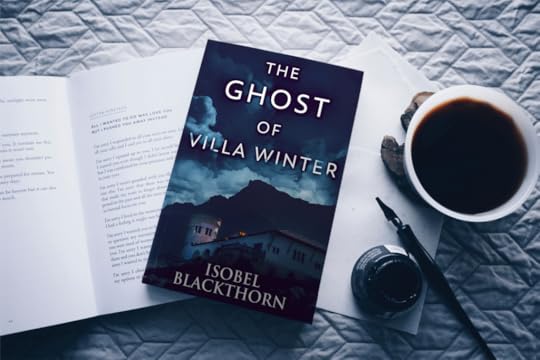
‘… This book is so well written. The author has a knack of drawing you in with her words and this keeps you gripped the whole way through…. ‘ Confessions of a Bookworm
‘… This is my first Isobel Blackthorn book and it will not be my last. Set in idyllic Fuerteventura, this detective thriller packs a punch…. ‘ Chloe Elizabeth McCrea
‘… Mysterious killings…intriguing and interesting characters…gripping unexpected twists and turns…paranormal entities…yep, this book has it all…. ‘ Jenny Dy
‘… I have never read any of Isobel’s work before and I look forward to reading more…. ‘ Karen and her Books
‘… I think the best way to describe Villa Winter is a mix between Cluedo with Death in Paradise… ‘ Kiki Hempell

‘… An engaging murder mystery with a fun plot line, some annoying characters and vividly descriptive scenes…. ‘ Marilyn Goncalves
‘… It’s #4 in the series of Canary Island mysteries that feature Clarissa Wilkinson. The book is complete on its own and it doesn’t matter if you haven’t read the earlier ones, this is the only one that I have read…. ‘ Archana Maroo, Narrate a Tale
‘… If you’re looking for a #cozymystery with a slightly #supernaturalstory then you should try this book…. ‘ Angel Hench, Ouroboros
‘… Ha, the fun I had reading this book by Isobel Blackthorn. I am a huge fan of Jessica Fletcher’s Murder She Wrote, and Clarissa Wilkinson’s adventures in The Ghost Of Villa Winter reminded me of her…. ‘ Farshana, Rain’n’ Books
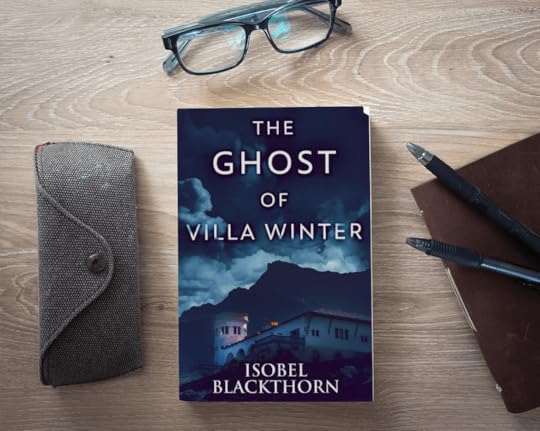
‘… The Ghost of Villa Winter has everything- a modern day Miss Marple ..Murder … mystery… ghosts… history …not to mention a mini tour through the Canary Islands….’ Ceylan Goktalay
‘… I enjoyed this book as it had a really unique setting, a solid mystery, a main character I grew fond of, and a twisty ending…. ‘ Debbie Rozier
‘… As the story builds you start to wonder where it’s going and who the perpetrator could be (I never get it right). I also really liked the setting and now want to go to the Canary Islands… ‘ Emily Patten
‘… This was an entertaining, fast-paced murder mystery and I enjoyed it! The story was a bit slow to start, but I liked how the author took the time to describe the beautiful island and introduce us the characters…. ‘ Elvina Ulrich
Find out more about The Ghost of Villa Winter (Book 4 in the Canary Islands Mysteries Series) here: https://isobelblackthorn.com/the-ghost-of-villa-winter/
March 10, 2021
Re-visiting Alice Bailey’s 10 Point Plan
by Patrick Chouinard
I’m delighted to share this article by theosophical teacher and thinker, and dear friend Patrick Chouinard in which he addresses the broader issues underlying the so-called Ten-Point Plan circulating among conspiracy theorists opposed to Alice Bailey.

Are Alice Bailey’s teachings satanic or part of a conspiracy for a “one world government”?
Alice Bailey teaches that we are here on earth to love and be of service, and lead lives of unselfishness, honesty and goodness. Isn’t that what God wants of us? Jesus said only those who follow God’s commands love God and only these will be saved (Matthew 19:17; Matthew 7:21–23; Rev 20:12) and He gave a “new command”: Love one another. What God looks at is our heart. We are told in the Bible that “God is love”: “Anyone who does not love does not know God, because God is love; Whoever lives in love lives in God, and God in him” (1 John 4:8 and 4:16) .
Alice Bailey writes: “Let love be the keynote in all relationships, for the power which must salvage the world is the precipitation of love; Arrest each unloving thought; stamp out each critical action, and teach yourself to love all beings – not in theory but in deed and in truth.”
Theosophy is of God because these are the principles or “commands” it teaches and stands for. It emphasizes love and compassion above all. H.P. Blavatsky, the foundress of the theosophical movement wrote: “ALTRUISM … This is the keynote of Theosophy and the cure for all ills; the giving to others more than to oneself… especially that which we owe to all those who are poorer and more helpless than we are ourselves – self-sacrifice.”
James, the brother of Jesus wrote, “Religion that is pure and undefiled before God the Father is this: to visit orphans and widows in their affliction, and to keep oneself unstained from the world” (James 1:27).
I fail to see how striving to live these ideals could be satanic or “lead one astray.” You don’t have to agree with everything Alice Bailey or Blavatsky wrote (nor do they encourage mindless unquestioning acceptance) – I don’t – but to call their work evil or of Satan, the “father of lies,” is actually itself “Satanic,” for the way of Satan (the “accuser”) has ever been to make evil to appear good and good to appear evil. Let me quote the Biblical criteria for deciding which side a teacher is on:
“But he that believeth these things which I have spoken, him will I visit with the manifestations of my Spirit, and he shall know and bear record. For because of my Spirit he shall know that these things are true; for it persuadeth men to do good. “And whatsoever thing persuadeth men to do good is of me; for good cometh of none save it be of me.”
(Ether 4:11)
Is there anything in any of Alice Bailey’s teachings that does anything other than attempting to persuade men and women to do good? I assure you there is not. If there is good in a teaching then the scripture says that this “good cometh of none save it be of me.”
And as Hastings Rashdall said:
”Those who believe that love is the thing of highest value in human life will generally believe also that ‘God is love indeed, and love Creations highest law.’ But even if through intellectual perplexity they fail to do so, such persons may be placed among those of whom Christ said, ‘He that is not against us is for us’…”
 Hicks on Unsplash
Hicks on UnsplashThere are many Youtube videos on the supposed “10 Point Plan of Alice Bailey” which totally misrepresents what she taught and wrote. For her actual position see : https://m.facebook.com/story.php?story_fbid=258840451182820&id=258830914517107 .
Furthermore, Alice Bailey was AGAINST a centralised totalitarian “one world government,” and any form of authoritarianism or oppression:
“The basic goal is the freedom and the liberation of mankind, but the spiritual workers are handicapped by the fact that men themselves must make free choice and decision in order to be free; they can only be liberated when they – as individuals and later as groups – liberate themselves from the expressed thought-control of the powerful dominating groups and from the fears which these groups intentionally engender.
Freedom can never be conferred through totalitarian methods; liberation cannot come through a dictator or dictating groups…they are fighting – and rightly fighting – the totalitarian methods of cruelty, spying, murder, suppression and the lack of freedom.
What they are doing in truth is fighting the abominable methods of imposing the rule of a few evil and ambitious men upon the masses…They are fighting the technique of exploiting the ignorant through misinformation, organized lying and limited education. They are fighting against the sealing up of nations within the confines of their own territory, against the police state, the lack of free enterprise and the reduction of men and women to automatons. This is the true imprisonment of the human spirit.”
(The Rays and the Initiations, p.745)
”Mankind is not ready for some super-government, nor can it yet provide the unselfish and trained statesmen that such a government would require. As yet, there are more seeds of danger in this concept than there are of helpfulness. Nevertheless, it is a dream which will some day materialise.”
Externalisation of the Hierarchy, p. 640
“The unification to which the forward looking people aspire does not involve the neglect of any part, but it does involve the care and nurture of each part in order that it may contribute to the well being of the entire organism. It involves, for instance, the right government and proper development of every national unit so that it can adequately perform its international duties, and thus form part of a world brotherhood of nations.
“This concept does not even involve the formation of a world state, but it does involve the development of a universal public consciousness which realizes the unity of the whole, and thus produces the determination that each must be for all and all for each as it has been said. Only in this way can there be brought about an international synthesis which will be characterized by political and national unselfishness.
“This universal state of mind will not again inevitably involve the founding of a world or universal religion. It requires simply the recognition that all formulations of truth and of belief are only partial in time and space, and are temporarily suited to the temperaments and conditions of the age and race.
“Those who favor some particular approach to the truth will nevertheless achieve the realization that other approaches and other modes of expression and terminologies, and other ways of defining deity can be equally correct and in themselves constitute aspects of a truth which is greater and vaster than man’s present equipment can grasp and express.
“The new world order will not impose a uniform type of government, a synthetic [universal] religion and a system of standardisation upon the nations. The sovereign rights of each nation will be recognised and its peculiar genius, individual trends and racial qualities will be permitted full expression”
The Emerging New World Order [according to Alice Bailey] : http://malvinartley.com/PDF%20Files/2025_nwo_compilation.pdf
All of this directly contradicts the “New World Order” narrative painted by Bailey’s accusers.
It is true that Alice Bailey was critical of orthodox (i.e, Catholic, Protestant, Evangelical, etc.) Christian theology, yet she said “There is, however, no point in attacking Christianity. Christianity cannot be attacked; it is an expression—in essence, if not yet entirely factual—of the love of God, immanent in His created universe.” (Her views on the New Testament and on Christ are contained in her book From Bethlehem to Calvary: https://www.lucistrust.org/online…/from_bethlehem_calvary .)
She regarded Christianity as the “religion of love” and of service. Aside from these two essentials she thought certain ideas and attitudes in orthodox Christianity need revisioning:
“Priests and churchmen, orthodox instructors and fundamentalists (fanatical though sincere) are seeking to perpetuate that which is old and which sufficed in the past to satisfy the enquirer, but which now fails to do so. Sincere but unenlightened religious men are deploring the revolt of youth from doctrinal attitudes…
[The] presentation of divine truth, as given by the churches in the West and by the teachers in the East, has not kept pace with the unfolding intellect of the human spirit. The same old forms of words and of ideas are still handed out to the enquirer and they do not satisfy his mind nor do they meet his practical need in a most difficult world. He is asked to give unquestioning belief but not to understand…[He] is asked to accept the interpretations and the affirmations of other human minds who claim that they do understand and that they have the truth…
[Christ] must feel (with an aching heart) that the simplicity which He taught and the simple way to God which He emphasized have disappeared into the fogs of theology…Men have traveled far from the simplicity of thought and from the simple, spiritual life which the early Christians lived.
Is it not possible that the Christ may regard the separative life of the churches and the arrogance of the theologians as wrong and undesirable—dividing (as they have) the world into believer and unbeliever, into Christian and heathen, into the so-called enlightened and the so-called benighted—and as contrary to all that He Himself held and believed when He said, “Other sheep I have which are not of this fold.” (John X.16.)
 Gabriel Lamza on Unsplash
Gabriel Lamza on UnsplashHow can light shine again in the minds of men when churchmen keep the people in a state of fear unless they accept the old theological interpretations and the old ways of approaching God?
Christianity has emphasized immortality but has made eternal happiness dependent upon the acceptance of a theological dogma: Be a true professing Christian and live in a somewhat fatuous heaven or refuse to be an accepting Christian, or a negative professional Christian, and go to an impossible hell—a hell growing out of the theology of The Old Testament and its presentation of a God, full of hate and jealousy.
Both concepts are today repudiated by all sane, sincere, thinking people… Still less do they accept the “lake that burneth with fire and brimstone” (Rev. XIX.20) or the everlasting torture to which a God of love is supposed to condemn all who do not believe in the theological interpretations of the Middle Ages, of the modern fundamentalists or of the unreasoning churchmen who seek—through doctrine, fear and threat—to keep people in line with the obsolete old teaching.
The churches in the West need also to realize that basically there is only one Church, but it is not necessarily only the orthodox Christian institution. God works in many ways, through many faiths and religious agencies; this is one reason for the elimination of non-essential doctrines. By the emphasizing of the essential doctrines and in their union will the fullness of truth be revealed.”
Yes, Alice Bailey believed that one can find God in other religions besides Christianity. Christians seem to have forgotten that truth, wherever it is found, must come from God. According to pastor John Burke, God looks to our heart (1 Samuel 16:7) not our beliefs:
“No one person knows or sees all—we’re all limited, unless God reveals himself, we’re all just making blind guesses…What’s fascinating if you read the sacred Scriptures of the World’s Religions is that only one God speaks to All Nations, or seems concerned with all people on earth.
Ultimately, we don’t know, but we don’t need to worry about “those other people” because God cares about them more than you do. “The eyes of the Lord search the whole earth in order to strengthen those whose hearts are fully committed to him” (2 Chronicles 16:9). What does He see when he looks in your heart—a desire to seek Him? To humbly follow Him? To love him?
So the important question for you and me is not, “What about other religions” or “How will God deal with people who have never heard.” We don’t really know. The better question for us is, “What will I do with what I do know?” Will I seek God? Will I live for God? God wants relationship with you.” (No Perfect People Allowed)
It is curious how Bailey’s Christian critics fear the creation of an imposed “one world religion,” whereas it is they who seek to covert everyone to their creed – a “one size fits all” religion, with all the “right” views on Christ and Christianity (because they are so sure they have the last word on how to interpret the Bible). Religious diversity and different theological interpretations seem intolerable to them.
The so-called “new age” Christian theology of Alice Bailey is supported in the Bible ( see Joseph J. Dewey’s ‘Gods of the Bible’ http://www.freeread.com/the–gods-of-the-bible-part-1/ ). In Romans 9-11, Paul envisages the eventual salvation of the Jews and his Adam christology of 1 Corinthians 15: 22 points towards universal salvation. 1 Cor 15:19 tell us that God’s plan of salvation continues after death ( see also Tim 2:4), just as the preexistence of the soul is in the Bible (Ephesians 1:4; Jeremiah 1:5) and reincarnation ( Revelation 3:12 https://www.near-death.com/reincarn…/history/bible-00.html ). As for the “Lucifer Trust” issue, here is the unsinister truth about it: http://www.freeread.com/archives/3102.html
The mission statement of the Lucis Trust is summarized at their website:
“The worldwide activities of the Lucis Trust, founded by Alice and Foster Bailey, are dedicated to establishing right human relations. The motivating impulse is love of God, expressed through love of humanity and service of the human race.” They certainly sound like Satanists! The real history of Satanism is not a real history at all. It is mostly Christian Fundamentalist propaganda written for the purpose of demonizing perceived enemies of fundamentalist beliefs.”
It seems Christianity as it has existed has always needed an enemy – an enemy to define itself against; to separate itself from, and to rally its membership against, rather than to humbly and simply love and serve in the spirit of Christ. Evangelicals focused on Communism, then when that threat fell, they filled the void with an anti-gay campaign (raising millions to “fight” this “threat”).
Now the big enemy is the New Age movement and Alice Bailey (they are in good company, even Jesus was accused of being possessed by Beelzebub). Contrast that with this challenge given by Alice Bailey:
“I ask you to drop your antagonisms and your antipathies, your hatreds and your racial differences, and to attempt to think in terms of the one family, the one life, and the one humanity. I would remind you that hatred and separateness have brought humanity to the present condition…I ask you to seal your lips to words of hatred and of criticism, and to talk in terms of brotherhood and of group relationships…
Lose sight of your own affairs, your petty sorrows, worries and SUSPICIONS, in the urgency of the task to be done, and spread of unity, of love and of harmlessness.
I also ask you to sever your connection with all groups which are seeking to destroy and to attack, no matter how sincere their motive. Range yourself on the side of the workers for constructive ends, who are fighting no other groups or organisations, and who have eliminated the word “anti” out of their vocabulary.”
Esoteric Psychology – Volume I, 2. The Present Ray Plan and the Workers
Now that is a campaign worth rallying around.
Check out other articles written about Alice Bailey here: https://isobelblackthorn.com/alice-bailey-articles/
February 27, 2021
A Treatise on Cosmic Fire: A Theory of Everything

Back in the early noughties, I undertook doctoral studies in the School of Social Ecology at Western Sydney University and produced the world’s first PhD thesis on the teachings of theosophist Alice A. Bailey. Last year, peer-reviewed journal The Esoteric Quarterly encouraged me to write an article based on one of the chapters. I chose the one on cosmology.
I was keen not to simply copy and paste a thesis chapter; a PhD thesis proves the candidate worthy of calling themselves a scholar and is not necessarily reader-friendly. Even though my thesis was commended by examiners for the quality of its prose, as well as for its originality, in September 2020 I did a complete re-write of the cosmology chapter. It was a huge undertaking and a massive shift away from creative writing. Anyone who knows anything about Alice Bailey’s A Treatise on Cosmic Fire will know what I am talking about. I was amazed I could even get back into the headspace.
The article was peer-reviewed, praised, edited and proofread, and was due to be published in the Winter 2020 issue of The Esoteric Quarterly. Then it got put forward to Spring. I just heard that The Esoteric Quarterly is on hiatus. But they did format the article with their masthead. So here it is!
eq160221-blackthornDownloadThis article explores and evaluates Alice Bailey’s esoteric cosmology presented in A Treatise on Cosmic Fire as a mythic theory of everything, situating it alongside scientific quests for a single explanation of the universe, since in the words of esoteric scholar Olav Hammer, “one of the most striking characteristics of the Esoteric Tradition is precisely its use of contemporary science as a source of legitimacy.”
Isobel Blackthorn, PhD, is the author of The Unlikely Occultist: a biographical novel of Alice A. Bailey, and the biography Alice A. Bailey: Life & Legacy.
February 22, 2021
Facebook, the Australian Government and Me
“Thank you for reaching out. In response to Australian government legislation, Facebook restricts the posting of news links and all posts from news Pages in Australia. Globally, the posting and sharing of news links from Australian publications is restricted. We are working on restoring any pages that have been restricted in error.”
That was the email I got yesterday from Facebook’s help centre after Facebook put a blanket ban on Australians accessing news on their platform. They acted in advance of the Australian government’s proposed legislation or new media code requiring that Facebook pay for news content after the Australian branch of the Rupert Murdoch empire News corp kicked up a stink over lost advertising revenue. The government chose to include a very broad definition of ‘media’ to include any and all publications. Facebook then took that definition and went ahead with the ban.
We can’t see any news at all on Facebook. Not only Australian news, but all international news as well. My newsfeed is now so incredibly dull I can scarcely be bothered scrolling.

Without any warning, Australians woke up to discover their Facebook pages had been removed or their page content wiped. Emergency services and health advice pages were quickly restored when it became apparent Facebook had overreached. But for authors like me who have a website where they showcase their books and reviews and more, the ban is still in place.
My Facebook page has been wiped of all content and I cannot post there any more. I unable to share a link to my website on my Facebook profile, and I cannot share it in any Facebook group. Neither can any other Australian. If I get an overseas friend to post my website link in one of my Facebook groups or anywhere on Facebook, I and no other Australian can see the post. All because my author website has been deemed an Australian publication.

It feels so extreme. This sudden and dramatic action by Facebook brings home how vulnerable ordinary citizens are. We rely on tech giants in a vast array of ways. And the landscape can change with the flick of a switch and suddenly, what we treated as a basic human right of sorts, has gone.
What really gets me riled is this situation that ordinary Australians are in is entirely the result of an advertising-revenue battle between the Murdoch empire, our rather bullish and myopic government, and a tech giant majoring in zero empathy. We are just collateral.



